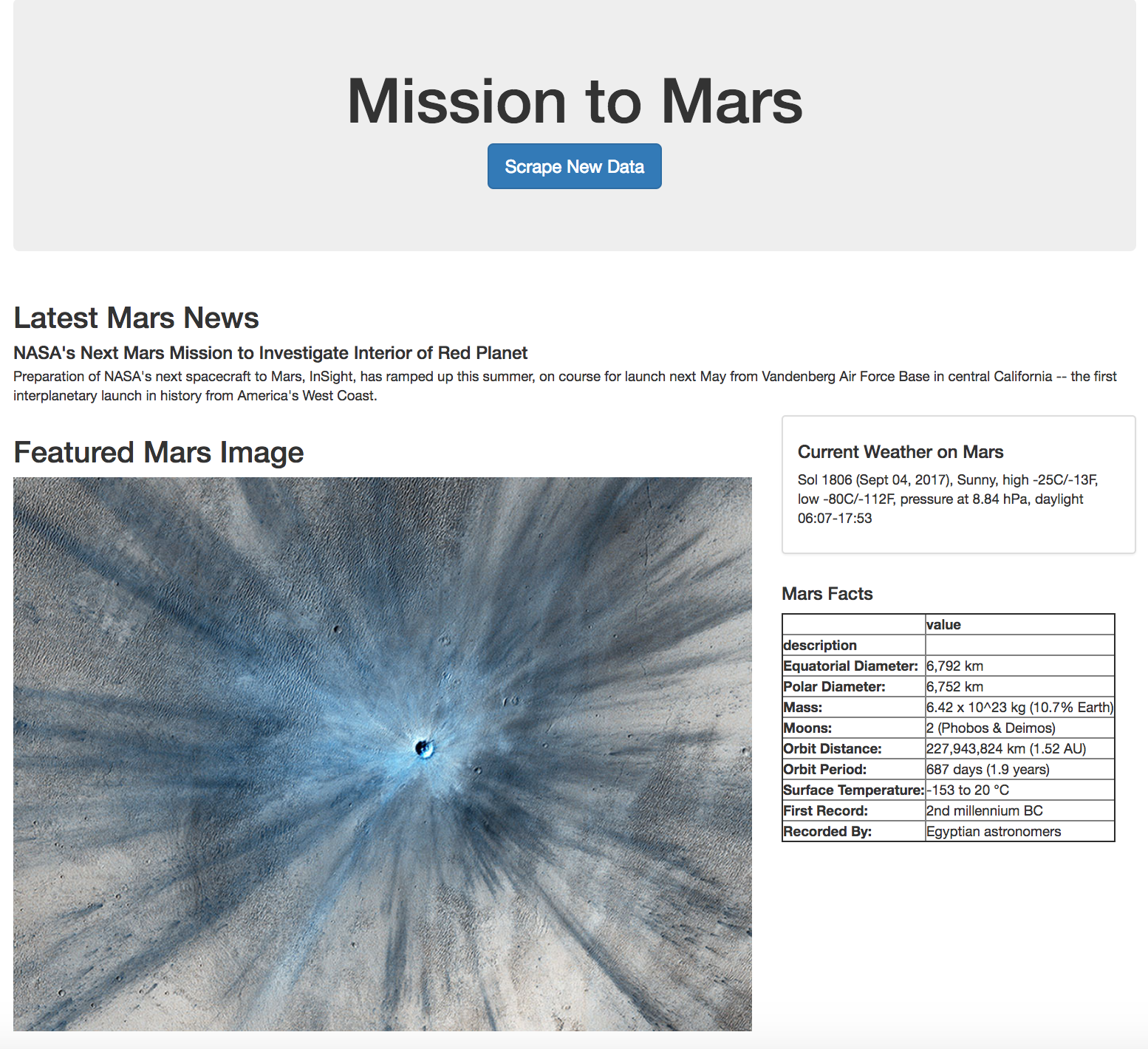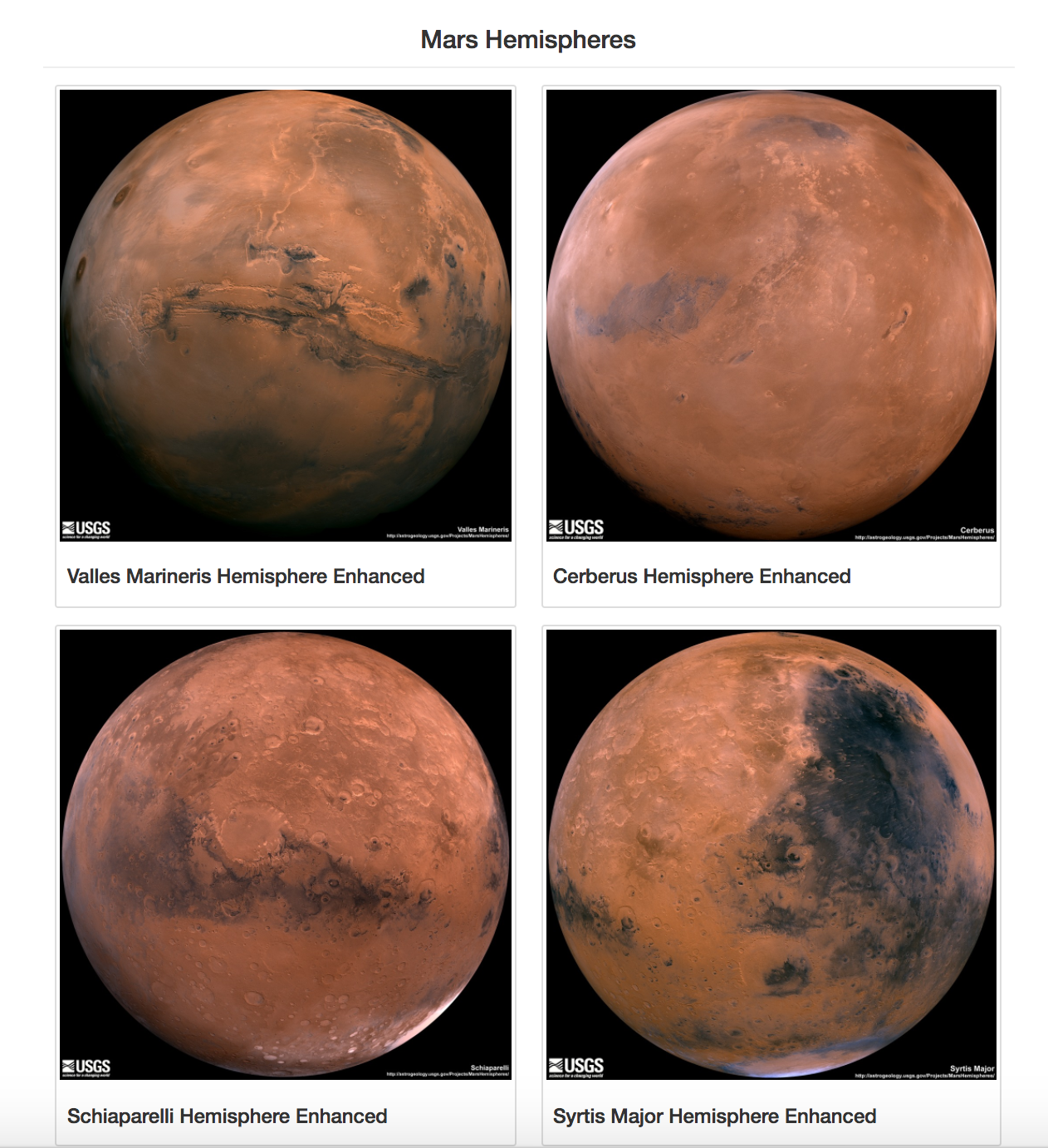In this challenge I built a web application that scrapes various websites for data related to the NASA Mission to Mars and displays the information in a single HTML page. The following outlines what was completed.
Completed my initial scraping of the information below using Jupyter Notebook, BeautifulSoup, Pandas, and Requests/Splinter.
Created a Jupyter Notebook file called mission_to_mars.ipynb to complete all of my scraping and analysis work. Used Splinter to navigate the sites when needed and BeautifulSoup to help find and parse out the necessary data.
- I scraped the NASA Mars News Site and used python script to collect the latest News Title and Paragraph Text.
-
Visited the url for JPL Featured Space Image here.
-
Used splinter to navigate the site and find the image url for the current Featured Mars Image and assign the url string to a variable called
featured_image_url.
- Visited the Mars Weather twitter account here and scrape the latest Mars weather tweet from the page. Saved the tweet text for the weather report as a variable called
mars_weather.
- Visited the Mars Facts webpage here and use Pandas to scrape the table containing facts about the planet including Diameter, Mass, etc. and converedt the data to a HTML table string.
-
Visited the USGS Astrogeology site here to obtain high resolution images for each of Mar's 4 hemispheres.
-
Used a Python dictionary to store both image url string for the full resolution hemisphere image, and the Hemisphere title containing the hemisphere name.
-
Appended the dictionary with the image url string and the hemisphere title to a list with one dictionary for each hemisphere.
Used MongoDB with Flask templating to create a new HTML page that displays all of the information that was scraped from the URLs above.
-
The Jupyter notebook was converted into a Python script with a function that executed all scraping code to return one Python dictionary containing all of the scraped data.
-
Next, a route was created to import the Python dictionary and store the return value in Mongo as a Python dictionary.
-
Created a root route to query the Mongo database and pass the mars data into an HTML template to be displayed.
-
Created a template HTML file to take the mars data dictionary and display all of the data in the appropriate HTML elements.


